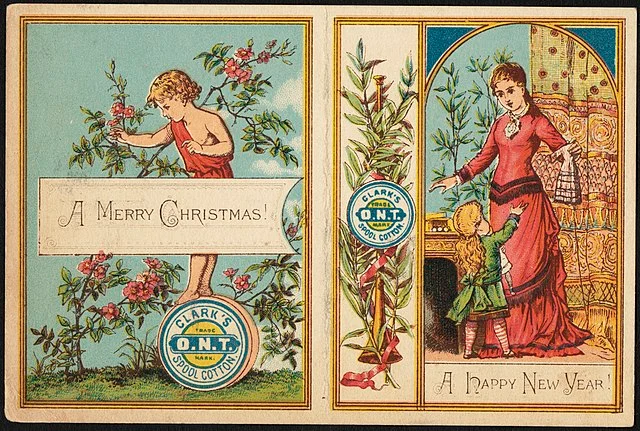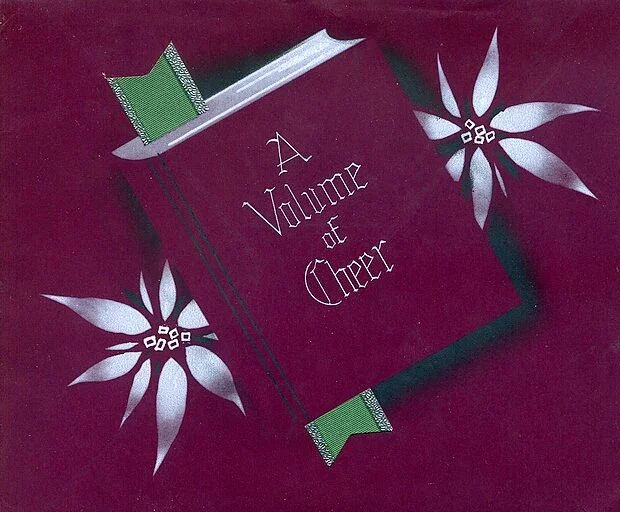
Fascinating History of Christmas Greeting Cards
Share this article
According to Christians, Christmas or Christmas Day is the religious and holy month primarily celebrated on December 25th to commemorate the birth of Jesus Christ. Christmas is celebrated with great fanfare and enthusiasm among all age groups. Families get together on this day to exchange eye-catching Christmas greeting cards, exchange Christmas gifts, and enjoy the delicious food served on this occasion while singing Christmas carols.
Presenting Christmas greeting cards to family, friends, or business associates on this day is one of the popular traditions of the Christmas celebration. It is believed that Christmas cards will bring good luck to the recipients. Most common Christmas wishes on these cards are about “Unwrap yourself a joyful Christmas,” “Wishing you a Merry Christmas,” “May your Christmas be merry and bright,” etc.
Exchanging Christmas greeting cards has been an essential part of the Christian tradition for generations. They have provided an excellent opportunity to exchange ideas, memories, and even small gifts. In 1534, a Christmas letter was sent with the “Merry Christmas” wish printed on it. An ornamental manuscript was given to King James VI, King of Scotland (also named King James I of England) in 1611, which was similar to a Christmas card. Christmas and New Year wishes were in the center of it with a rose.

First Christmas Card. Source: WIKIMEDIA COMMONS
Though greeting cards have been around since the Victorian era, Sir Henry Cole officially introduced the practice of sending Christmas greeting cards in 1843. Cole approached his artist friend, J.C Horsley, to design the first Christmas card. The greeting card was printed with a thousand copies by a London printer. It consisted of three folding parts. The first two folding parts showcased generous people being warm-hearted to the poor fellows, while the internal part was about a family celebrating at the dinner table. However, the card also became very controversial as young children were shown enjoying wine along with the family.
After Sir Henry Coles created that greeting card, some Victorians started the ritual of creating these holiday cards at Christmas time. Greeting cards became more popular after 1870 as printing methods were on the verge of improvement. These Christmas greeting cards and postcards became less costly as they could be sent in an unsealed envelope compared to half the price of a general letter.
During the late Victorian era, birds (robins) and snow scenes became popular in greeting cards. Postmen with red uniforms were nicknamed ‘Robin Postmen,’ and snow scenes reminded the horrible winter weather of 1836.

Christmas Card by Louis Prang. Source: Wikimedia Commons
Louis Prang, an immigrant from Prussian Silesia (originally from Germany), is considered the father of the American Christmas card. He printed the first affordable Christmas cards in 1875. His cards were different from Cole and Horsely’s holiday cards. These cards were artistic and beautiful, featuring nature, flowers, plants, children, and wishes like “Merry Christmas.”
The appreciation for holidays started to grow widely in the late 1800s. Different card competitions were held, and card businesses began to reach their peak. People started to collect Christmas cards as collectibles. The famous sharpshooter and the star of Buffalo Bill’s Wild West show, Anne Oakley, sent the first personalized Christmas cards to her friends and family in Scotland featuring her photo in the card in 1891.
The modern Christmas card industry started to rise at its height at the beginning of the 1900s. In contrast, the popularity of homemade Christmas cards also started to rise. These handmade cards were beautifully customized with foil, ribbon, and a special message, but their shapes were odd.
In 1915, the commercial business of holiday cards reached a new level when Joyce Clyde Hall and his two other brothers, William and Rollie, started the famous card company Hallmark. Though the first cards created by Hallmark were small in size and left no space for writing, in today’s modern era, the cards are colorfully designed with some sweet, short messages featuring Santa Claus, flowers, stars, etc. The most popular Christmas card of Hallmark, published in 1977, is about three little angels designed by Ruth Morehead with the wishes, “God bless you, love you, keep you… at Christmas time and always.”

Christmas Card 17th of December 1938. Source: Wikimedia Commons
As more time passed, the artistic tradition of exchanging greeting cards developed. People started sending these creative holiday cards to their friends and families on Christmas and New Year. In 1930, the New York Public Library hosted an exhibition to make people more familiar with the use of greeting cards. During the 1940s, Americans became more acquainted with greeting cards when charitable organizations started to raise money by selling Christmas cards with their logos.
In 1947, William E. Henry (an American psychologist) tried to establish the importance of greeting cards by conducting a study. He showed that greeting cards are one of the unique mediums used to convey feelings to one another. He also recognized greeting cards as a formal celebration of ideas, involving personal warmth and home feelings, making someone remember their sweet childhood moments.
Sending greeting cards to dears is one of the best ways to show affection and love towards them. The first introduction of Christmas stamps brought more popularity to the Christmas cards designed with a wreath, two candles, and the message, “Christmas, 1962”. The greeting card industry rapidly started to grow after the 2000s. New printing methods began to develop, making customized holiday greeting cards easier.
As Internet use began to expand, the tradition of exchanging greeting cards became modernized, too. While some still hold the culture of sharing physical holiday cards, digitalization has made the process easier, more efficient, and inexpensive. Personalized Christmas e-greeting cards can be easily created with a few mouse clicks and shared without having trouble sending them through the post office. The Christmas card is now visually made in different languages in audio, video, and images created for everyone.

Digital Christmas greeting cards
The tradition of exchanging greeting cards during Christmas that started with Sir Henry Cole is still passed down from generation to generation. The invention of these cards made the tradition of our celebration of Christmas flourish. So, seize the opportunity to bond deeply with your friends and family by sending cute Christmas greeting cards.
Peace, joy, and love to you and your family this Christmas.
